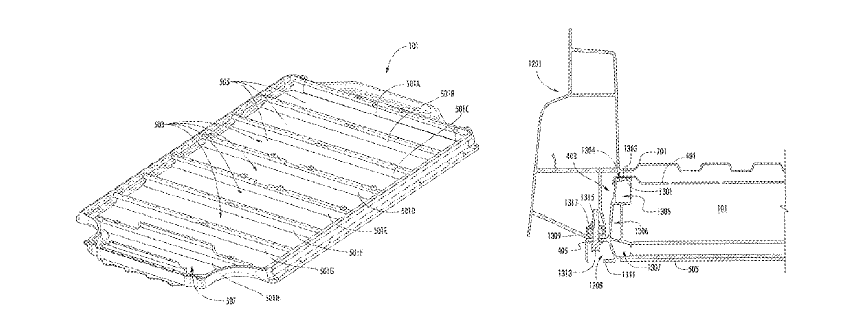Editor’s Note: Much has changed in the automotive world since the last time that Light Metal Age spotlighted patents focused on the role of aluminum in electric vehicles (EVs). More and more automakers and suppliers are devoting their intellectual and financial resources toward EV production. As a result, automakers are displacing or at least minimizing the use of internal combustion engines (ICEs), especially diesel, to power their vehicles, opting instead for electric battery powered vehicles that include various hybrid or full-electric designs. This strategy has sparked a revolution in research and development devoted toward more efficient batteries and methods of charging, in order to effectively raise the mileage of hybrid and full-electric vehicles. This has resulted in a wave of intellectual property progress, which is the focus of this patent calendar review.
Aluminum’s place in this revolution is secured primarily due to its lightweight advantage over steel. However, aluminum is not necessarily able to boast a lighter weight than carbon fiber composites, which cost more and are not easily recycled. As automakers switch from a traditional ICE design to EV technology, the amount of aluminum castings used in ICE powertrains will naturally be reduced in favor of wrought aluminum components implemented in EVs. Many of the recent patents here are assigned to various international companies and deal with battery installations designed to form the base of EV floor structures that carry and box the batteries. These lightweight structures must be not only rigid, but also have impact resistance in case of a vehicle crash. As is seen in this patent selection, multiport extrusions serve this function well. Various methods of cooling the batteries are incorporated into the battery packs and even provide seasonal air conditioning and heating of the EV interior. Altogether, whether used in battery boxes, body structures, motor and manifold housings, or interiors, these recent patents demonstrate that EV manufacturers and suppliers depend on the lightweight advantage that aluminum provides in achieving system performance.
— Joseph C. Benedyk, Editor
US10998589 — BATTERY PACK AND ELECTRIC VEHICLE — Contemporary Amperex Technology Co., Limited (China) — The present disclosure provides a battery pack and an electric vehicle. The battery pack includes a casing wherein the battery is placed, a cooling plate located below the casing in a height direction, and a bracket assembly located below the cooling plate in a height direction and fixedly connected to the casing, the bracket assembly is used for direct contact with a mounting plate of the electric vehicle. When the battery pack of the present disclosure is used in an electric vehicle, since the bracket assembly separates the cooling plate from the mounting plate of the electric vehicle, the cooling plate does not need to directly exchange heat with the mounting plate, thereby reducing the influence of the temperature of the mounting plate on the cooling plate, and increasing the cooling or heating efficiency of the cooling plate to the battery inside the casing.
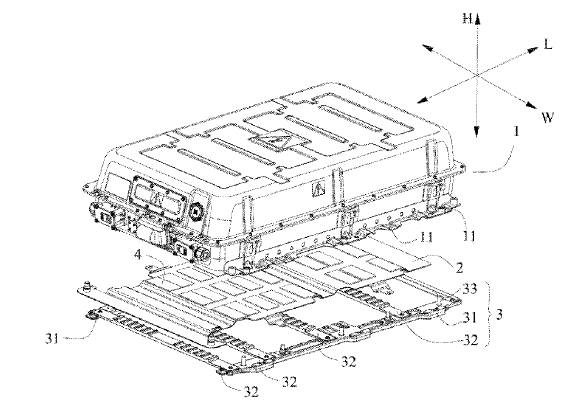
US10978763 — BATTERY PACK COVER FOR AN ELECTRIFIED VEHICLE — Ford Global Technologies, LLC (USA) — An exemplary battery pack cover includes a polymer layer and a metallic layer comprising aluminum grounded to a chassis of an electric vehicle. An exemplary method includes shielding battery cells of a battery pack against electromagnetic interference and thermal energy using a multilayer cover that is grounded to a chassis of an electrified vehicle.
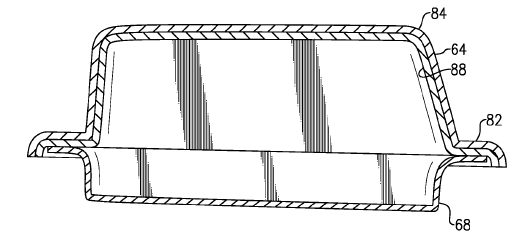
US10940891 — ELECTRIC VEHICLE — Volvo Car Corporation (Sweden) — An electric vehicle, including, a user compartment and a front section including a portion of a vehicle chassis, a crash absorbing member located in the front section and connected to the portion of the vehicle chassis, the crash absorbing member including a first extruded profile, preferably an aluminum profile, having a main extension direction in a transverse direction (y) of the vehicle, whereby the extrusion direction of the first extruded profile extends substantially in the transverse direction (y) of the vehicle, and wherein further the first extruded profile includes at least two cells (C1, C2) being defined by outer walls and at least one intermediate wall separating the at least two cells (C1, C2), wherein the at least one intermediate wall has a main extension direction in the transverse direction (y) and a second extension direction which extends substantially in a vertical direction (z).
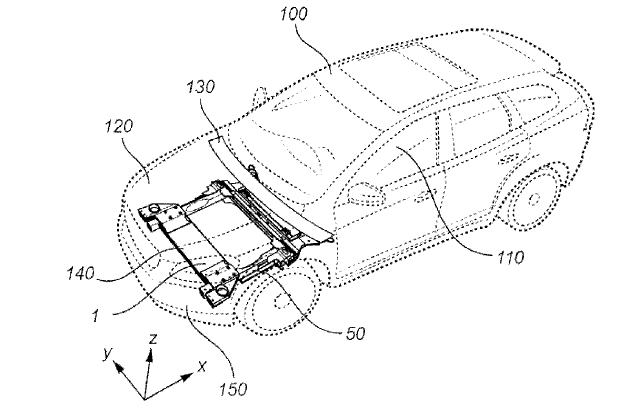
US10938003 — BATTERY PACKS TO POWER ELECTRIC VEHICLES — Chongqing Jinkang New Energy Vehicle Co., Ltd. (China) and SF Motors, Inc. (USA) — Systems and methods to power electric vehicles are disclosed. A battery pack to power an electric vehicle is provided. The battery pack residing in the electric vehicle. The battery pack can include a plurality of battery modules. Each of the plurality of battery modules can include a plurality of battery blocks. A first battery block can include a plurality of cylindrical battery cells. Each of the plurality of cylindrical battery cells can have a pair of battery cell terminals and can have a voltage of up to 5 volts across the pair of battery cell terminals. The plurality of cylindrical battery cells can be electrically connected in parallel within the first battery block. Each cylindrical battery cell of the plurality of cylindrical battery cells can be spatially separated from each of at least one adjacent cylindrical battery cell within the first battery block by less than 2 millimeters (mm). The cell holders can include a conductive material such as aluminum and can be laser welded.
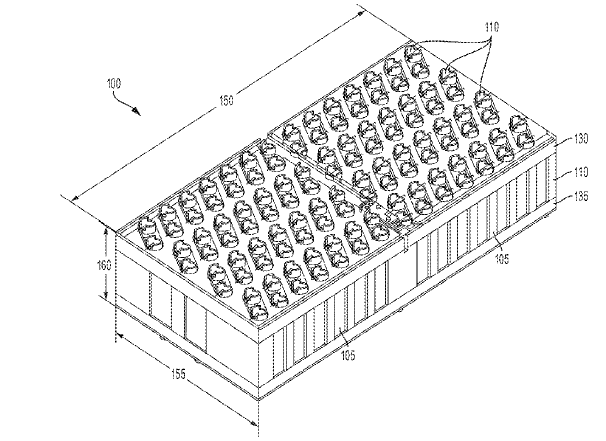
US10932396 — ELECTRIC VEHICLE INVERTER MODULE HEAT SINK — SF Motors, Inc. (USA) — Provided herein are a heat sink module of an inverter module to power an electric vehicle. The heats sink module can include a heat sink body having a plurality of mounting holes, a fluid inlet and a fluid outlet. The heats sink module can include a cooling channel that can be fluidly coupled with the fluid inlet and the fluid outlet. The heats sink module can include an insulator plate having a first surface and a second surface. The second surface of the insulator plate can couple with a joining surface of the heat sink body to seal the cooling channel. The heats sink module can include a heat sink lid disposed over the insulator plate. The heat sink lid can have a plurality of mounting feet to couple with the mounting holes of the heat sink body to secure the heat sink lid to the heat sink body.
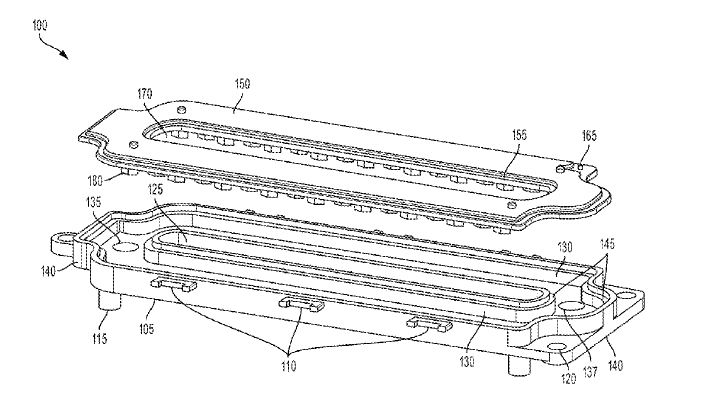
US10930917 — ELECTRIC VEHICLE BATTERY CELL HAVING MULTIPLE STACK STRUCTURES — SF Motors, Inc. (USA) — Provided herein are systems, apparatuses, and methods of powering electric vehicles. A battery pack can be disposed in an electric vehicle to power the electric vehicle. A housing can be arranged in the battery pack and can have a first polarity terminal. A capping element can be mechanically coupled with the housing and can have a second polarity terminal. A battery cell array can be arranged within a cavity in the housing. The battery cell array can have a first polarity terminal electrically coupled with the housing. The battery cell array can have a second polarity terminal electrically coupled with the capping element. The housing can be comprised of one or more electrically conductive, electrically insulative, and thermally conductive materials, or any combination thereof. The electrically conductive and thermally conductive material for the housing an aluminum alloy.
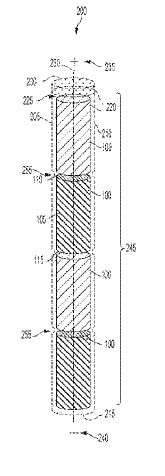
US10857906 — VEHICLE SEAT RISER — Tesla, Inc. (USA) — A riser made from extruded AA6005A aluminum alloy for a seat of a vehicle includes a first leg, a second leg, a first arm, a second arm, and a third arm. The first leg includes a first end and a second end. The second leg is substantially parallel to the first leg and has a first end and a second end. The third arm includes a first end and a second end, where the second end of the third arm extends from the first end of the second leg. The first arm extends from the first end of the first leg to the first end of the third arm. The second arm extends from the second end of the first leg to the first end of the third arm.
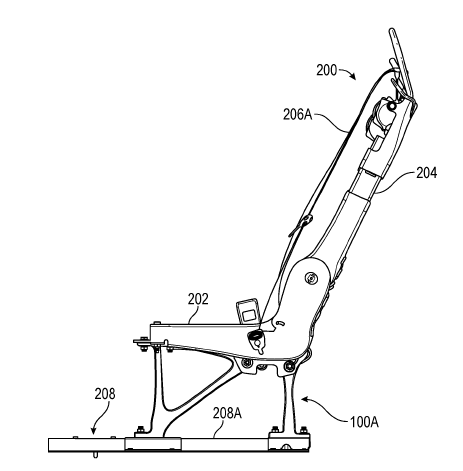
US10833379 — ELECTRIC VEHICLE WITH MODULAR REMOVABLE AUXILIARY BATTERY WITH INTEGRATED COOLING — Rivian IP Holdings, LLC (USA) — An electric vehicle system for transporting human passengers or cargo includes an electric vehicle that includes a body, a plurality of wheels, a cargo area, an electric motor for propelling the electric vehicle, and a primary battery for providing electrical power to the electric motor for propelling the electric vehicle. An auxiliary battery module is attachable to the electric vehicle for providing electrical power to the electric motor via a first electrical connector at the auxiliary battery module and a second electrical connector at the electric vehicle that mates with the first electrical connector. The auxiliary battery module can be positioned in the cargo area while supplying power to the electric motor and can be removable and re-attachable from the electric vehicle. The auxiliary battery module includes an integrated cooling system for cooling itself during operation of the electric vehicle including a conduit therein for circulating coolant.
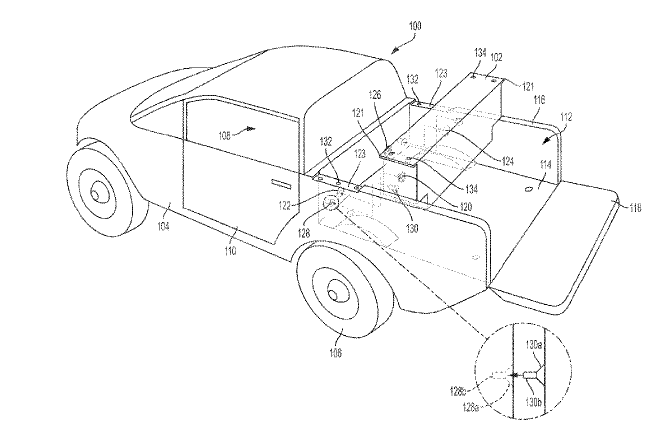
US10818897 — CONNECTION ELEMENT FOR A BATTERY BOX, AND BATTERY BOX AND METHOD FOR THE PRODUCTION THEREOF — Linde + Wiemann SE & Co. KG (Germany) — The invention relates to a connecting element (1) to connect a battery cell (15) of an electric vehicle (16) to a battery box (10), wherein the connecting element (1) has at least one connecting section (5) for connection to the battery cell and is joined to the battery box (10) by welding. The problem addressed by the invention is that of being able at least largely to dispense with the need to use filler material when joining the connecting element to the baseplate of the battery box to improve its quality and make it more cost-effective. The problem is solved by a connecting element (1) that has at least one joining section (2) for securely connecting the connecting element to the battery box (10).
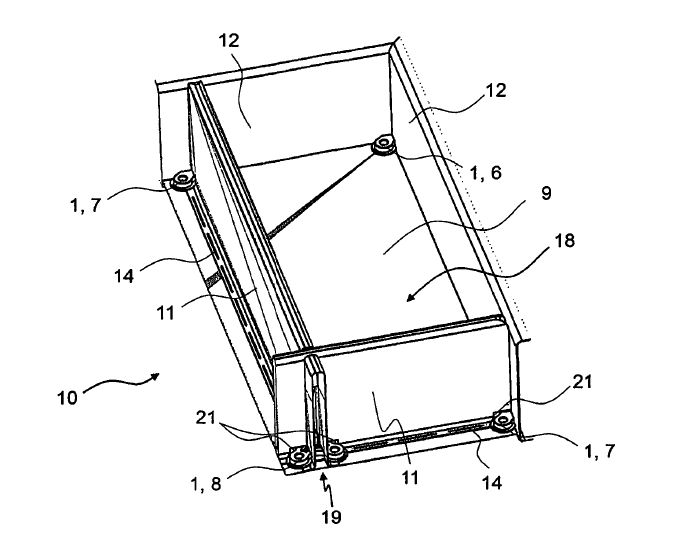
US10780767 — SYSTEM FOR ABSORBING AND DISTRIBUTING SIDE IMPACT ENERGY UTILIZING AN INTEGRATED BATTERY PACK — Tesla, Inc. (USA) — An energy absorbing and distributing side impact system for a vehicle includes first and second side sills, each of the first and second sills comprising multiple longitudinal channels, at least an upper longitudinal channel positioned above a vehicle floor panel and at least a lower longitudinal channel positioned below the vehicle floor panel, a battery enclosure mounted between front and rear suspensions of the vehicle, the battery enclosure having a first side member attached to the first side sill, and a second side member attached to the second side sill; cross-members integrated into the battery enclosure; and at least one mechanical connection securing the cross-members to the vehicle floor panel. Preferably battery pack side members 403, including extended region 405, battery pack top panel 401 and battery pack bottom panel 505 are each fabricated from a light weight metal, such as aluminum or an aluminum alloy.
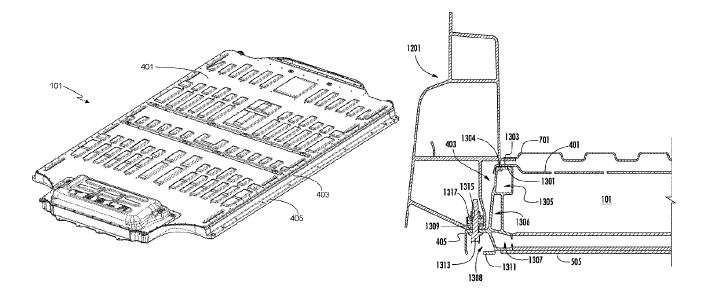
US10703186 — BATTERY CARRIER FRAME AND METHOD FOR THE PRODUCTION THEREOF — Dura Operating, LLC (USA) — In the case of a battery support frame for an electric vehicle battery, said support frame being optimized in terms of tightness, compensation of component tolerances and load absorption in particular in the event of a crash, provision is made for a corner element to be arranged as tolerance compensation between a longitudinal profile and a transverse profile, the longitudinal profile and transverse profile, both hollow –chamber profiles, being connected together via said corner element.
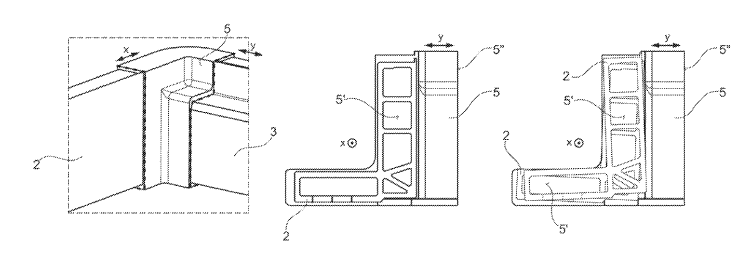
US10700581 — GEOMETRY OF ROTOR END RING AND STATOR END TURNS — Tesla, Inc. (USA) — A method of making an AC induction motor includes: providing a rotor and a stator for the AC induction motor; determining, for different geometries of an end ring of the rotor, a location of a first centroid of current density in the end ring; determining, for end turns of the stator, a location of a second centroid of current density in the end turns; selecting a geometry for at least the end ring of the rotor so that an axial distance between the first centroid of current density and the second centroid of current density is minimized; and assembling the AC induction motor, wherein the end turns and the end ring have the selected geometries. The AC motor has an aluminum alloy housing.
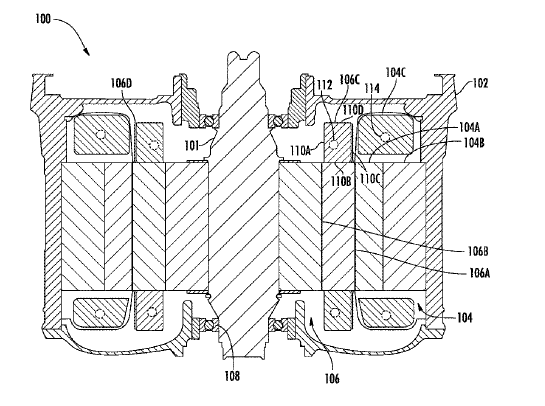
US10690234 — ELECTRIC VEHICLE POWERTRAIN — Proterra Inc. (USA) — An electric vehicle may include a powertrain including an axle having a first drive wheel and a second drive wheel, a first motor and a first gearbox operatively coupled to the first drive wheel, and a second motor and a second gearbox operatively coupled to the second drive wheel. The electric vehicle may also include a radiator including coolant, and an oil manifold including first and second oil inlets, first and second oil outlets, first and second coolant inlets, and at least one coolant outlet. The oil manifold with a body made of aluminum or an aluminum alloy may be fluidly connected to the first and second gearboxes, the first and second motors, and to the radiator.
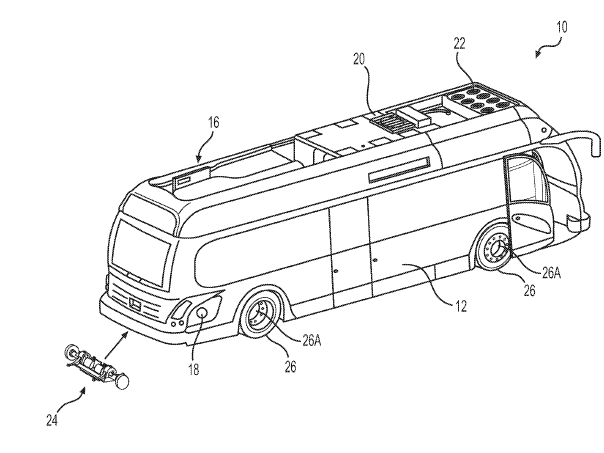
US10673093 — ELECTRIC VEHICLE LITHIUM BATTERIES HAVING NON-UNIFORM ANODE LAYER — Chongqing Jinkang Energy Vehicle Co., Ltd. (China) and SF Motors, Inc. (USA) — Apparatuses, systems, and methods of storing electrical energy for electric vehicles are provided. A battery pack can be disposed in an electric vehicle to power the electric vehicle. A battery cell can be arranged in the battery pack. The battery cell can include a housing. The housing can define a cavity within the housing. The cavity of the battery cell can include a separator having a first side and a second side, a cathode disposed along the first side of the separator, and an anode disposed along the second side of the separator. The anode can include a first portion adjacent to the second side of the separator, and a second portion adjacent to the first portion and separated from the separator by the first portion. A porosity of the first portion of the anode can be greater than a porosity of the second portion of the anode. The electrically conductive and thermally conductive material for the housing 110 of the battery cell 105 can include a metallic material, such as an aluminum alloy.
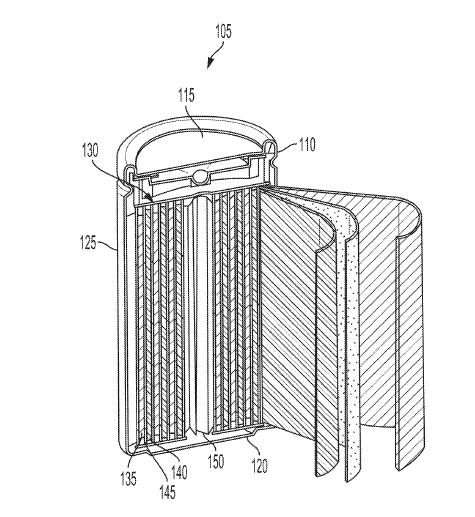
US10632858 — BATTERY ENCLOSURE SURROUNDED BY INTERNALLY REINFORCED CYLINDRICAL IMPACT ABSORBING ELEMENTS — Ford Global Technologies, LLC (USA) — A battery enclosure for the battery of an electric vehicle is disclosed that is provided with extruded cylindrical impact absorbing tubular members. The tubular members are arrayed about the battery enclosure between an inner wall and an outer wall in a spaced relationship. The tubular members are spaced from each other and include internal reinforcing walls that stiffen the battery enclosure and absorb impact loads. The reinforcing walls may be in an X-shaped, Y-shaped or parallel and may be oriented to absorb impact loads to a greater or lesser extent for an aluminum battery case made of an aluminum alloy AL6061-T6.
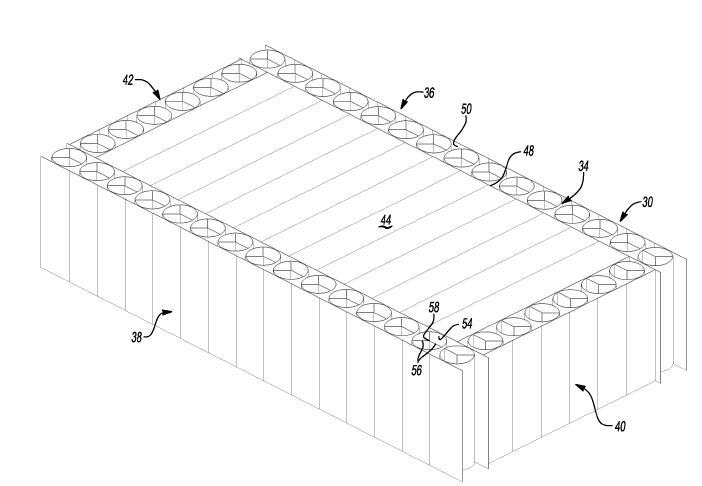
US10576836 — BATTERY CARRIER FRAME AND METHOD FOR THE PRODUCTION THEREOF — Dura Operating, LLC (USA) — In order to optimize a support frame for an electric vehicle battery in terms of tightness, compensation of component tolerances and load absorption in particular in the event of a crash, and to ensure good automated weldability, provision is made for a compensation insert to be arranged as tolerance compensation between a longitudinal profile and a transverse profile. The connection of the longitudinal profile and of the transverse profile to the compensation insert takes place preferably via a cohesive connection, in particular a welded joint or an adhesive bond. The compensation insert serves as a tolerance compensating bridging plug-in unit and is preferably a (die-)cast part, a deep drawn part or a forged part and is further preferably produced from a light metal alloy, in particular an aluminum alloy, and preferably as a solid material component. The longitudinal profile and transverse profile are preferably extruded profiles made of light metal alloys, in particular aluminum alloys. Preferably, the longitudinal profile and/or transverse profile are multi-chamber hollow profiles with one or more internal webs. Of course, it is also possible for the longitudinal profile and/or transverse profile and/or corner profile to be produced from an optionally fiber reinforced plastic material. In particular in such a case, provision can also be made for the different components to be joined by adhesive bonding.
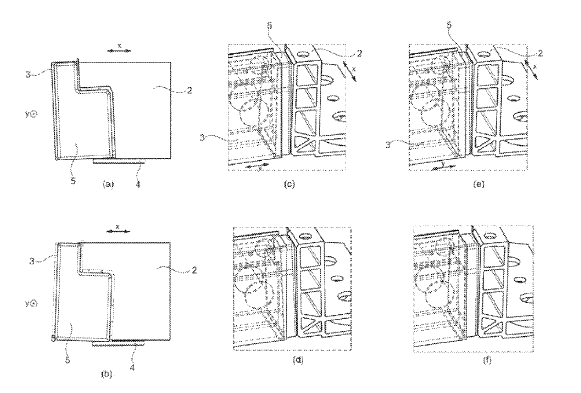
US10573874 — METHOD OF MANUFACTURING ELECTRONICAL CONNECTION MEANS — DAE SAN Electronics Co., Ltd. (Korea) — A bus bar for a battery of an electric vehicle and a method of manufacturing the bus bar are disclosed. Specifically, in the bus bar for a battery of an electric vehicle according to exemplary embodiments, a method of manufacturing an electrical connector including a plurality of battery terminal connection parts each having a through hole therein includes forming a plurality of the battery connection parts at an aluminum or aluminum alloy plate by removing the through hole part and a predetermined part positioned outer side of the battery terminal connection part, applying masking onto a remaining area except the battery connection part and the predetermined part, performing plating on the battery connection part, and forming remaining parts except the plurality of battery connection parts in the bus bar.
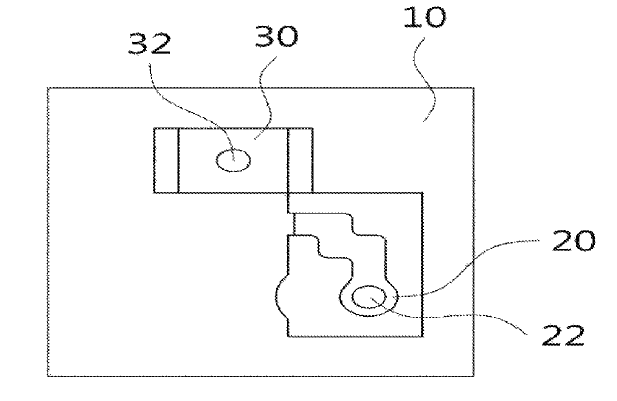
US10483515 — POWER STORAGE DEVICE, POWER STORAGE SYSTEM, ELECTRONIC DEVICE, ELECTRIC VEHICLE, AND POWER SYSTEM — Murata Manufacturing Co., Ltd. (Japan) — There is provided a power storage system comprising a plurality of battery lines and a connection terminal unit. Each battery line comprises a plurality of battery cells arranged in a first direction. The connection terminal unit is electrically connected to terminal faces of each battery cell of a group of the battery cells, and the group of the battery cells is disposed in a second direction. At least one cut out is formed in the connection terminal unit. There are also provided a power storage system for a house, a power storage system for a vehicle, an electronic device and an electric vehicle including the power storage device. There is also provided a connection terminal unit for electrically connecting a plurality of battery cells, in which at least one cut out is formed in the connection terminal unit. The power storage device 1 includes an armoring case 20 taking the shape of a substantially rectangular parallelepiped, made of a material having a high thermal conductivity and a high emissivity to obtain excellent thermal dissipation of the casing by using aluminum alloy plates for the armoring case body.
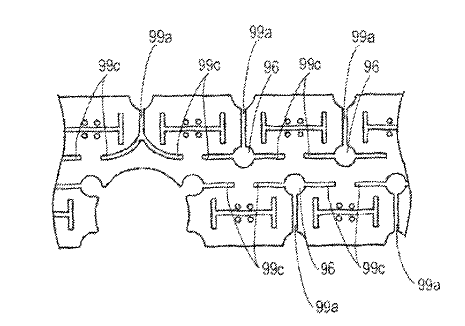
US10476061 — ELECTRIC VEHICLE CABIN FLOOR STRUCTURE — Chongqing Jinkang New Energy Vehicle Co., Ltd. (China) and SF Motors, Inc. (USA) — Provided herein are apparatus, systems, and methods for reducing noise in an electric vehicle. The apparatus can include a cabin floor, a battery pack, and a stiffener positioned between the cabin floor and the battery pack. The cabin floor can include a recess that that defines a volume in the cabin floor. The battery pack is coupled to the cabin floor and includes a plurality of battery cells generating a voltage and a current. The stiffener includes a first stiffener surface that faces the cabin floor, a second stiffener surface that faces the battery pack, and a first stiffener element that extends out of the first stiffener surface and conforms to a shape of the recess. The first stiffener element is positioned on the first stiffener surface to align with a position of the recess in the cabin floor.
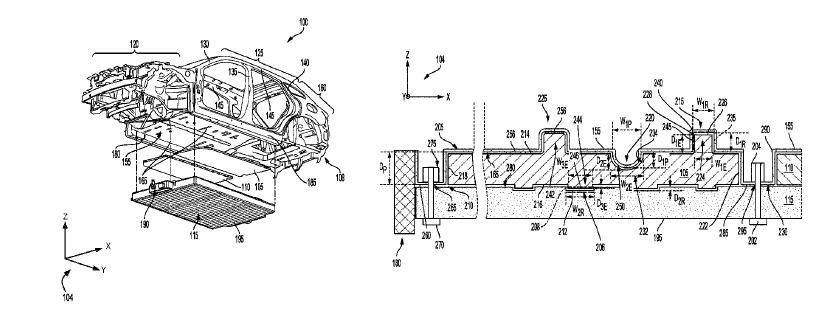
US10476051 — BATTERY PACK BASE PLATE HEAT EXCHANGER — Tesla, Inc. (USA) — A heat exchanger integrated into an electric vehicle’s battery pack enclosure is provided, where the heat exchanger conduits are mechanically and thermally coupled to the inside surface of the enclosure base plate, which is made of a thermally conductive material such as aluminum or steel, and where the battery pack enclosure is mounted such that ambient air flows over the outside surface of the enclosure base plate during vehicle motion. A thermal management system is coupled to, and controls operation of, the integrated battery pack heat exchanger such that in a first operational mode the heat exchanger is thermally coupled to the batteries within the battery pack with heat exchange tubing attached to the base plate using welding, soldering, etc. that allows efficient transfer of heat from tubing to the base plate and, in a second operational mode the heat exchanger, is thermally decoupled from the batteries within the battery pack.
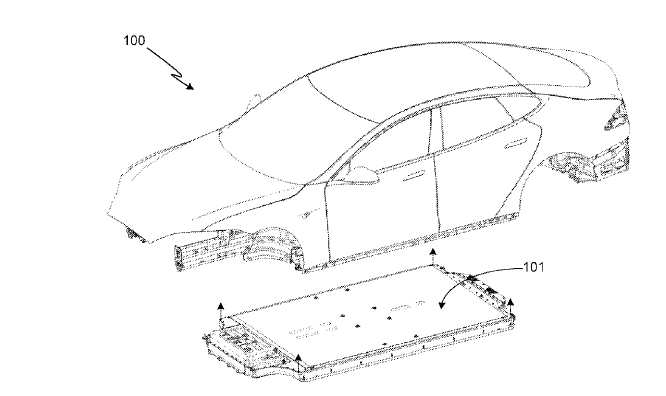
US10374270 — BATTERY HOLDER WITH COOLING SYSTEM — Benteler Automobiltechnik GmbH (Germany) — A battery holder for an electric vehicle is disclosed. The battery holder is mounted in a subfloor region of the electric vehicle and includes a pan and a cover. The pan is formed by an outer encircling frame and a bottom. The outer encircling frame is formed from multi-chamber aluminum alloy extrusions and the cooling system is integrated in the bottom of the pan.
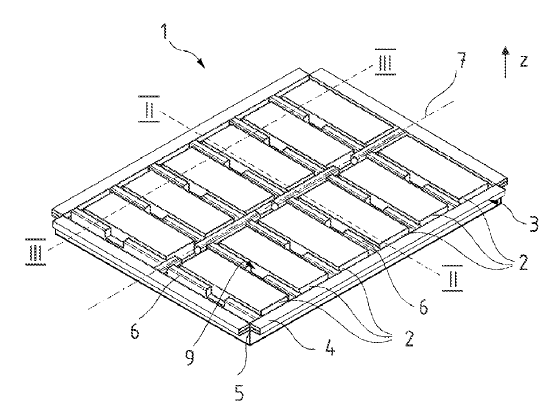
US10272759 — STRUCTURAL ENHANCEMENTS OF AN ELECTRIC VEHICLE — GM Global Technology Operations LLC (USA) — An electric vehicle includes a chassis frame, a battery pack, and a brace. The battery pack includes a support structure vertically spaced at least in-part from the chassis frame. The first brace extends between, and is engaged to, the chassis frame and the support structure.
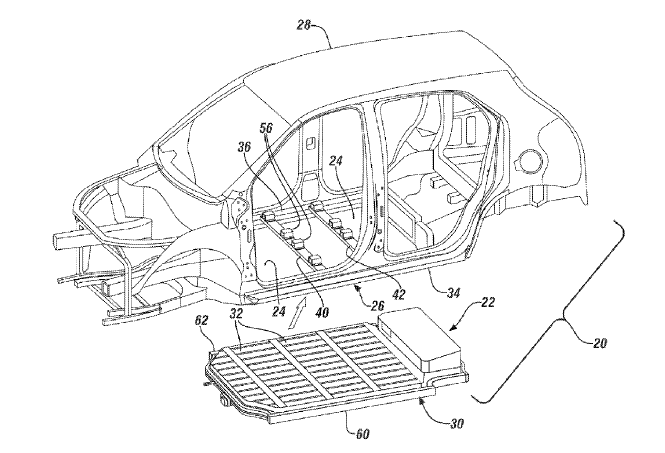
US10266199 — ELECTRIC VEHICLE — Guangdong Hua’chan Research Institute Of Intelligent Transportation System Co., Ltd. (China) — Disclosed is an electric vehicle, comprising a chassis (1), a vehicle body and a power battery (71), wherein the chassis (1) comprises a frame system (2) comprised of two multi-cavity aluminum box stringers and an aluminum multi-cavity beam assembly and connected between the two multi-cavity box stringers 21., a steering motor damping system (13) mounted on the frame system (2), a wheel system (12) connected to the steering motor damping system (13), a steering system (3) mounted on the frame system (2), and a braking system (4) mounted on the frame system (2); and the wheel system (12) comprises a left front wheel (121) using a hub motor, a left rear wheel (123) using a hub motor, a right front wheel (122) using a hub motor, and a right rear wheel (124) using a hub motor. Driving the wheels (121, 122, 123, 124) with the hub motors can omit a traditional mechanical transmission system, to simplify the structure of the chassis (1) and reduce the weight of the chassis (1). Compared with a traditional electric vehicle, the electrical vehicle has a lighter weight, smaller volume, reduced mechanical transmission loss, and improved electrical energy utilization rate.

US10155442 — ELECTRIC VEHICLE CHASSIS AND ELECTRIC VEHICLE USING SAME — Shenzhen Zhilun Driving Technology For Electric Vehicle Co., Ltd. (China) — Disclosed are an electric vehicle chassis and an electric vehicle using the electric vehicle chassis. The electric vehicle chassis comprises a frame system (2), a steering motor damping system (13), a wheel system (12), a steering system (3) and a braking system (14), wherein the wheel system (12) comprises a left front wheel (121) using a hub motor, a left rear wheel (123) using a hub motor, a right front wheel (122) using a hub motor, and a right rear wheel (124) using a hub motor; and the steering motor damping system (13) comprises a left front steering damping motor (131), a right front steering damping motor (133), a left rear steering damping motor (135) and a right rear steering damping motor (137). Driving the wheels with the hub motors can omit a traditional mechanical transmission system to simplify the structure of the chassis, reduce the weight of the chassis and reduce the mechanical transmission loss, thereby improving the power utilization efficiency. The frame system of the present invention uses multi-cavity box stringers 21 and multi-cavity box beams which are made of aluminum alloy, which not only form the support structure for supporting the body of the electric vehicle and but also reduce the overall weight of the frame and have a simple structure.
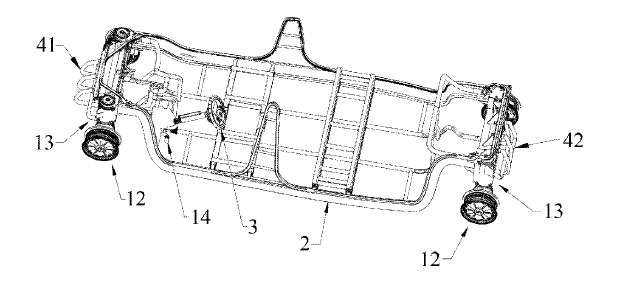
US10046422 — EXTRUSION PIECE WITH INSERT OF DISSIMILAR MATERIAL — Tesla, Inc. (USA) — A profile piece includes: an extruded piece of a first material having a mouth portion along at least part of its length; and an insert of a second material different than the first material, the insert attached to the extruded piece by the mouth portion, wherein the insert is configured for welding the profile piece to a component of a third material different than the first material, wherein the insert is attached to the channel by an adhesive, wherein the extruded piece comprises aluminum, and the second and third materials comprise steel. The profile aluminum is a vehicle door sill.
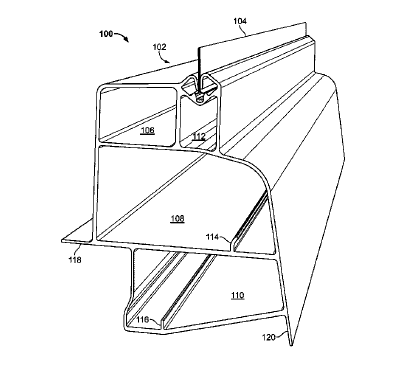
US10023038 — SYSTEM FOR ABSORBING AND DISTRIBUTING SIDE IMPACT ENERGY UTILIZING AN INTEGRATED BATTERY PACK — Tesla (USA) — An energy absorbing and distributing side impact system for a vehicle includes: first and second side sills, each of the first and second sills comprising multiple longitudinal channels, at least an upper longitudinal channel positioned above a vehicle floor panel and at least a lower longitudinal channel positioned below the vehicle floor panel; a battery enclosure mounted between front and rear suspensions of the vehicle, the battery enclosure having a first side member attached to the first side sill, and a second side member attached to the second side sill; cross-members integrated into the battery enclosure; and one or more bolts each extending though a respective opening in one of the cross-members and extending to an opposite side of the vehicle floor panel from the cross-member.
